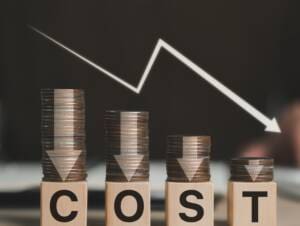April 15, 2024
Poor Cost of Quality: Strategies for Improvement
READ TIME: 3.2 MINS
What is the Cost of Quality (COQ)?
The Cost of Quality (COQ) is a crucial metric in the business world, shining a light on the financial implications of maintaining and ensuring product quality. Far from being a single figure, COQ encompasses various expenses related to preventing defects, identifying them before products reach customers, and addressing those that do. This concept breaks down into two main components: the cost of achieving high quality (prevention and appraisal costs) and the cost resulting from failing to achieve it, often referred to as the Poor Cost of Quality. The latter includes internal and external failure costs and highlights the financial impact of quality-related issues.
How Do You Calculate the Poor Cost of Quality (PCOQ)?
Calculating the Poor Cost of Quality involves a meticulous assessment of four main cost areas: internal and external failure costs and prevention and appraisal costs. This calculation not only illuminates the financial impact of quality issues but also serves as a critical tool for identifying areas ripe for improvement.
Internal Failure Costs: Stem from defects detected before the product reaches the customer, encompassing rework, scrap, and wasted resources.
External Failure Costs: These arise from defects found after the product reaches the customer, including returns, warranties, and the intangible cost of damaged reputation.
Prevention Costs: Proactive investments made to avoid defects, such as quality planning and training.
Appraisal Costs: Include activities to verify product quality, like inspections and testing.
Adding these costs provides a comprehensive view of the Poor Cost of Quality, offering a clear financial metric to gauge the effectiveness of quality management strategies.
Internal Failure Costs
Internal failure costs are early warning signs of inefficiencies within the production process. By identifying and addressing these costs, businesses can prevent the escalation of quality issues, saving significant amounts of money and time in the long run.
External Failure Costs
External failure costs often have far-reaching consequences beyond immediate financial losses. They affect customer satisfaction and brand loyalty, potentially leading to a decline in market share. Addressing these costs requires a committed approach to consistent quality and customer engagement.
Prevention Costs
Investing in prevention costs lays the groundwork for enduring quality and operational excellence. This strategic allocation of resources towards training, process improvement, and supplier quality management minimizes the likelihood of defects, thereby reducing the overall Poor Cost of Quality.

How to Address the Poor Cost of Quality?
Effectively addressing these qualities demands a multifaceted strategy:
Implement comprehensive quality management systems.
Foster a culture that prioritizes quality and continuous improvement.
Leverage technology and data analytics for quality control and process optimization.
Impact on Profitability
The Poor Cost of Quality directly impacts a company’s profitability. High quality-related costs can erode profit margins, while investments in quality improvements enhance operational efficiency and customer satisfaction, leading to increased profitability.
Identifying Areas of Improvement
Identifying areas of improvement involves regular analysis of quality data, employee feedback, and customer satisfaction metrics. This proactive stance enables businesses to make informed decisions and prioritize quality initiatives.
Resource Allocation and Quality Initiatives
Balancing resource allocation between prevention, appraisal, and failure costs is critical for effective quality management. Strategic investments in prevention and appraisal can significantly reduce failures’ occurrence and impact, optimizing the allocation of resources toward quality initiatives.
Key Takeaways
Understanding COQ is Crucial for Managing Quality and Profitability.
Calculating the Poor Cost of Quality Helps Identify Areas Needing Improvement.
Investing in Prevention Minimizes the Overall Poor Cost of Quality.
Strategic Resource Allocation Enhances Quality Management Efforts.
Continuous Improvement is Vital for Long-Term Business Success.
Conclusion
Mastering the Poor Cost of Quality is not merely about reducing expenses but strategically investing in your company’s future. By prioritizing quality at every level, businesses can diminish costs and foster a culture of excellence that propels them ahead of the competition. Remember, the move towards quality improvement is ongoing, and each step reduces the Poor Cost of Quality and paves the way for sustainable growth and success!
Links to Other Pages
- Windchill+ SaaS PLM: Review Windchill+ SaaS PLM, offering scalable and flexible Product Lifecycle Management solutions in the cloud.
- Windchill Change Management Software: Manage changes with Windchill Change Management Software and have seamless integration and control over product modifications.
- Closed Loop Manufacturing – Embracing Digital Thread: Learn more on Closed Loop Manufacturing with Digital Thread integration, optimizing efficiency and quality across the production lifecycle.
- Windchill Support Packages: Discover Windchill Support Packages, providing comprehensive assistance and maintenance services tailored to your PLM needs.
- Wincom – Windchill Extensions: Enhance Windchill’s capabilities with Wincom, offering extensions for enhanced PLM functionality and productivity.
- Power of Digital & AI to Select Projects: Our webinar on leveraging Digital and AI technologies to select projects effectively, optimizing decision-making processes.
TriStar Digital Thread Solutions welcomes questions. Feel free to CONTACT US if you can’t find what you’re looking for, or call us at 800-800-1714









Leave A Comment